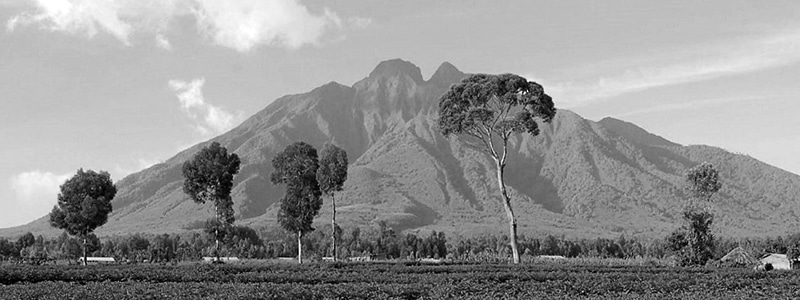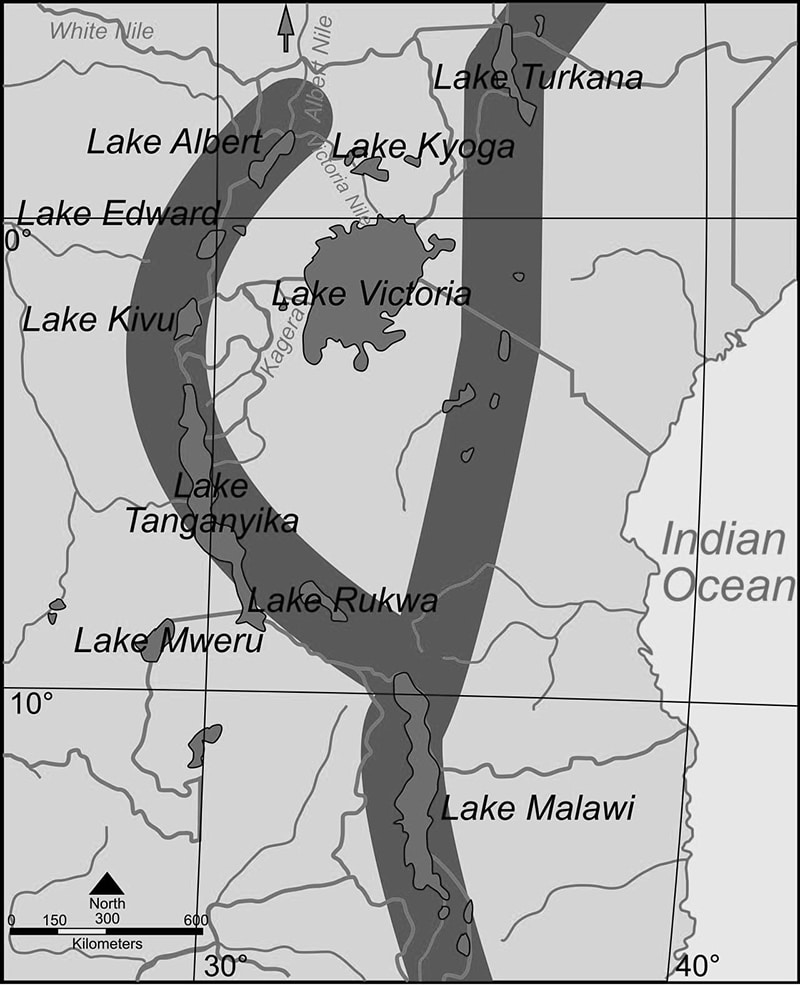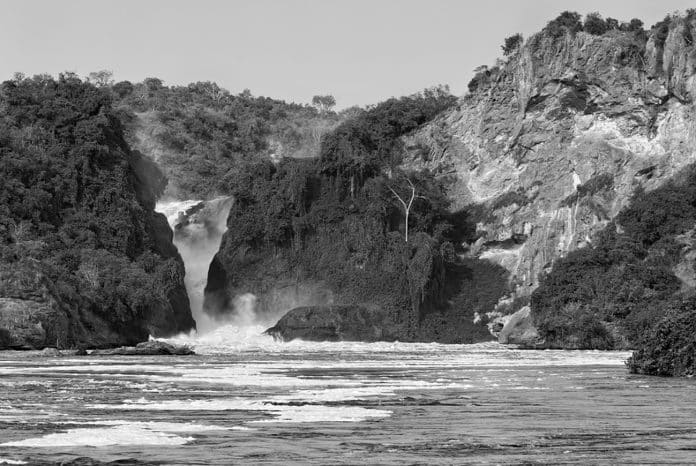The Crater Lake Albertine Rift Africa – Geologly, Ecology, Lakes, Rivers, Mountains and More
The Albertine Rift Valley, which runs through Tanzania, Burundi, Rwanda, the DRC and Uganda, is the East African Rift’s western branch. It stretches from Lake Albert’s northern end to Lake Tanganyika’s southern end. The valley and the surrounding hills are included in the geographical term.
Tectonic movements are slowly dividing the Somali Plate moving it away from the African continent, resulting in the Albertine Rift and mountains. Uplifted basement rocks of Pre-Cambria are overlain in parts by recent volcanic rocks in the mountains surrounding the rift.
Rivers and Crater Lakes in the Albertine Rift Africa
The Rwenzori Mountains, which run between Lake Rutanzige(formerly Lake Edward) and Lake Albert and the Virunga Mountains, which run between Lake Kivu and Lake Rutanzige, cut through the northern part of the rift. Between the Nile Basin to the east and north and the Congo Basin to the south and west, the Virungas form a barrier. Lake Rutenzige is fed by several large rivers, one of which is the Rutshuru River, and drains to the north into Lake Albert via the Semliki River. The Victoria Nile passes into the northern end of Lake Albert from Lake Victoria, then flows north to the Mediterranean and emerges as the White Nile from a point a bit to the west.
Lake Kivu, to the south of the Virungu, drains into Lake Tanganyika via the Ruzizi River. The Lukuga River drains Lake Tanganyika into the Congo River. The current hydrological system seems to have been constructed relatively recently, when the Virunga mountains erupted and obstructed the northward passage of lake water into Lake Edward from Lake Kivu, forcing it to flow southward into Lake Tanganyika instead. Lake Tanganyika, or individual sub-basins in the current lake, may have had no other exit than evaporation before then. The Lukuga developed just recently, allowing a pathway for Congo Basin aquatic species to populate Lake Tanganyika, which formerly had a separate biodiversity.
Mountains
The Itombwe Mountains, Virunga Mountains, Rwenzori Mountains and Lendu Plateauare the mountains from south to north.

Ptolemy’s “Mountains of the Moon” have been linked to the Ruwenzori mountains. The range stretches for 120 kilometers (75 miles) and is 65 kilometers (40 miles) broad. Mount Stanley stands at 5,119 meters (16,795 feet), Mount Speke at 4,890 meters (16,040 feet), and Mount Baker at 4,843 meters (15,889 feet). Eight volcanoes make up the Virunga Massif, which runs along Rwanda’s border with the Democratic Republic of Congo. Nyamuragira and Nyiragongo are two volcanoes that are still very active volcanoes.
The Marungu Mountains and Mount Kabobo in the DRC on the banks of Lake Tanganyika, the Kungwe-Mahale Mountains in western Tanzania, and Mount Bururi in southern Burundi are all isolated mountain blocks farther south. The majority of the massifs reach heights of 2,000 meters (6,600 feet) to 3,500 meters (11,500 ft).
Rift Albertine Ecology
The montane forests of the Albertine Rift are significant eco-regions. Albertine Rift is at altitudes ranging from 1,000 meters (3,300 feet) to 1,750 meters (5,740 ft feet), transitional forests, which are midway between lowland and montane forest, may be found. Montane forest may be found on slopes ranging from 1,600 meters (5,200 feet) to 3,500 meters (11,500 feet). Bamboo and elfin woodland may be found above 2,400 meters (7,900 feet). Above 3,500 meters (11,500 feet), Heather and grasses abound. Deforestation is threatening the environment as an expanding population seeks more farmland. Illegal timber logging is another issue, and artisanal gold mining has a negative impact on the community.
Other Important Things to Know About the Albertine Rift
- Albertine Rift Map

- Albertine Rift Conservation Society – https://albertinerift.wcs.org/
For more articles related to Tanzania Topography, click here!





























